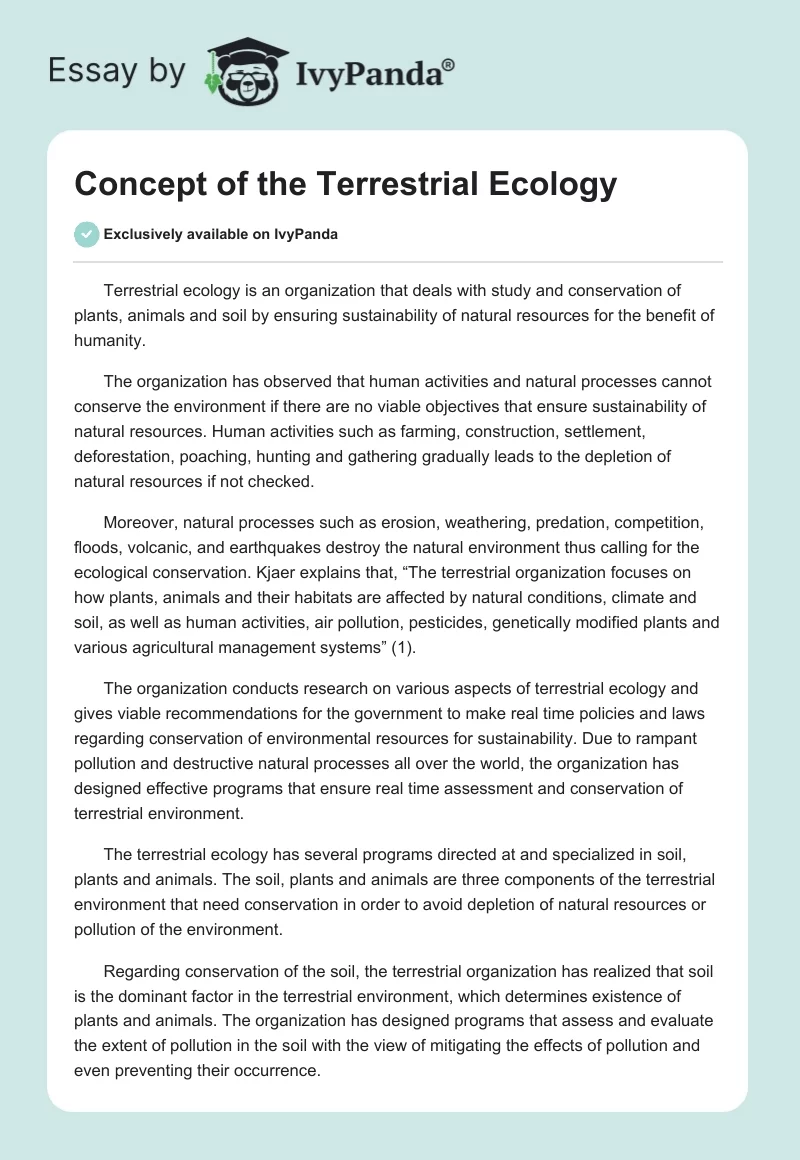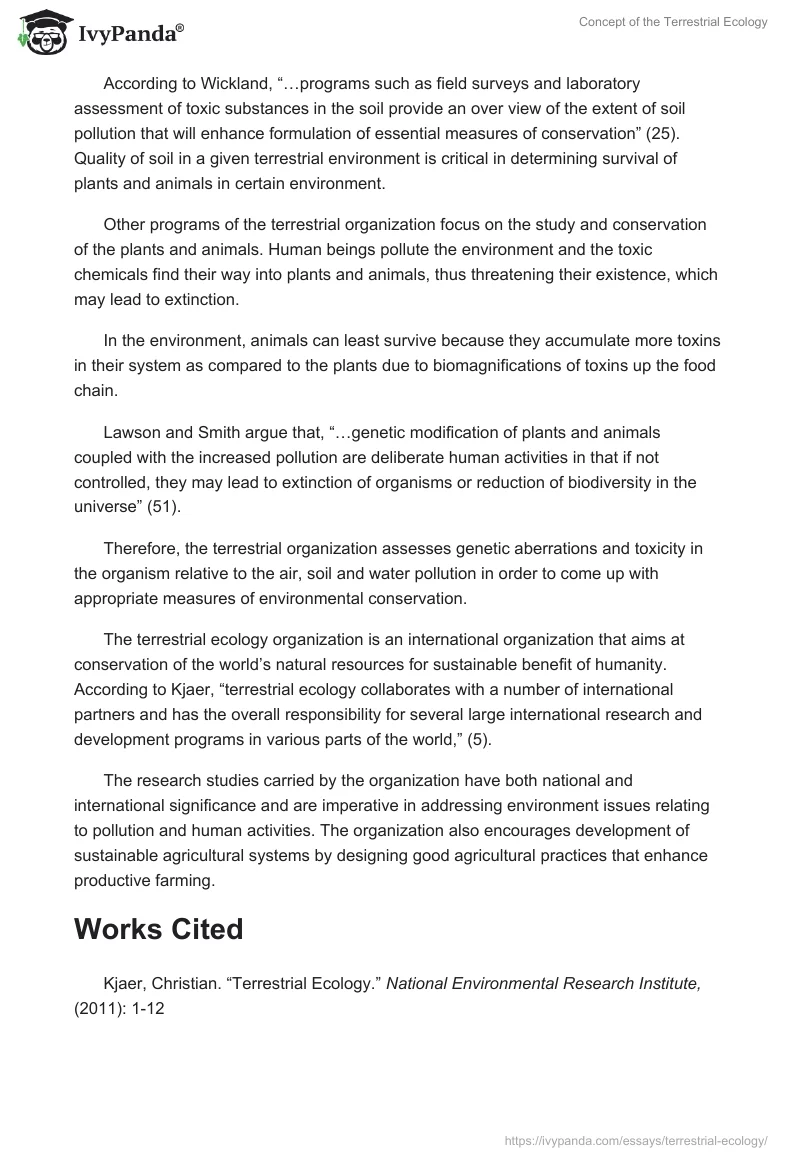Terrestrial ecology is an organization that deals with study and conservation of plants, animals and soil by ensuring sustainability of natural resources for the benefit of humanity.
The organization has observed that human activities and natural processes cannot conserve the environment if there are no viable objectives that ensure sustainability of natural resources. Human activities such as farming, construction, settlement, deforestation, poaching, hunting and gathering gradually leads to the depletion of natural resources if not checked.
Moreover, natural processes such as erosion, weathering, predation, competition, floods, volcanic, and earthquakes destroy the natural environment thus calling for the ecological conservation. Kjaer explains that, “The terrestrial organization focuses on how plants, animals and their habitats are affected by natural conditions, climate and soil, as well as human activities, air pollution, pesticides, genetically modified plants and various agricultural management systems” (1).
The organization conducts research on various aspects of terrestrial ecology and gives viable recommendations for the government to make real time policies and laws regarding conservation of environmental resources for sustainability. Due to rampant pollution and destructive natural processes all over the world, the organization has designed effective programs that ensure real time assessment and conservation of terrestrial environment.
The terrestrial ecology has several programs directed at and specialized in soil, plants and animals. The soil, plants and animals are three components of the terrestrial environment that need conservation in order to avoid depletion of natural resources or pollution of the environment.
Regarding conservation of the soil, the terrestrial organization has realized that soil is the dominant factor in the terrestrial environment, which determines existence of plants and animals. The organization has designed programs that assess and evaluate the extent of pollution in the soil with the view of mitigating the effects of pollution and even preventing their occurrence.
According to Wickland, “…programs such as field surveys and laboratory assessment of toxic substances in the soil provide an over view of the extent of soil pollution that will enhance formulation of essential measures of conservation” (25). Quality of soil in a given terrestrial environment is critical in determining survival of plants and animals in certain environment.
Other programs of the terrestrial organization focus on the study and conservation of the plants and animals. Human beings pollute the environment and the toxic chemicals find their way into plants and animals, thus threatening their existence, which may lead to extinction.
In the environment, animals can least survive because they accumulate more toxins in their system as compared to the plants due to biomagnifications of toxins up the food chain.
Lawson and Smith argue that, “…genetic modification of plants and animals coupled with the increased pollution are deliberate human activities in that if not controlled, they may lead to extinction of organisms or reduction of biodiversity in the universe” (51).
Therefore, the terrestrial organization assesses genetic aberrations and toxicity in the organism relative to the air, soil and water pollution in order to come up with appropriate measures of environmental conservation.
The terrestrial ecology organization is an international organization that aims at conservation of the world’s natural resources for sustainable benefit of humanity. According to Kjaer, “terrestrial ecology collaborates with a number of international partners and has the overall responsibility for several large international research and development programs in various parts of the world,” (5).
The research studies carried by the organization have both national and international significance and are imperative in addressing environment issues relating to pollution and human activities. The organization also encourages development of sustainable agricultural systems by designing good agricultural practices that enhance productive farming.
Works Cited
Kjaer, Christian. “Terrestrial Ecology.” National Environmental Research Institute, (2011): 1-12
Lawson, James & Smith, Richard. “Institute of Terrestrial Ecology.” Natural Environment Research Council, (2002): 1-36 Wickland, Diane. “Terrestrial Ecology.” Tennessee Valley Authority, (2007): 1-62


